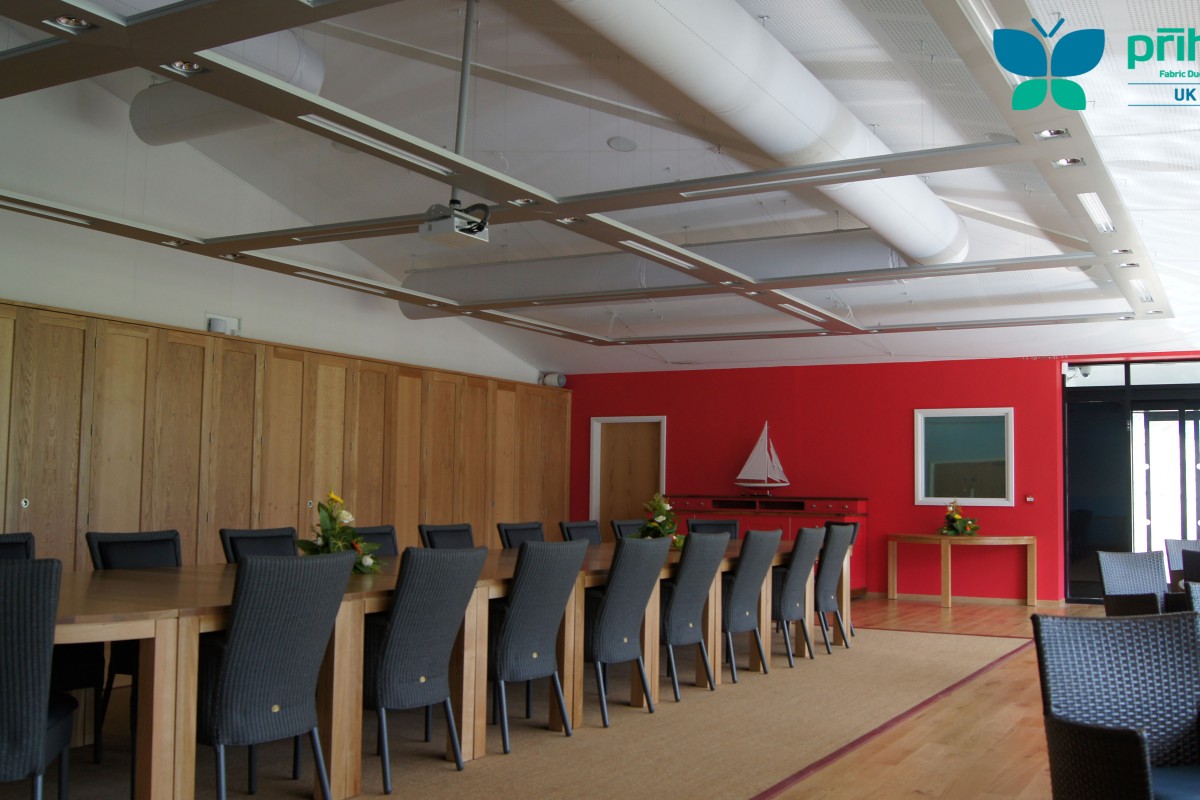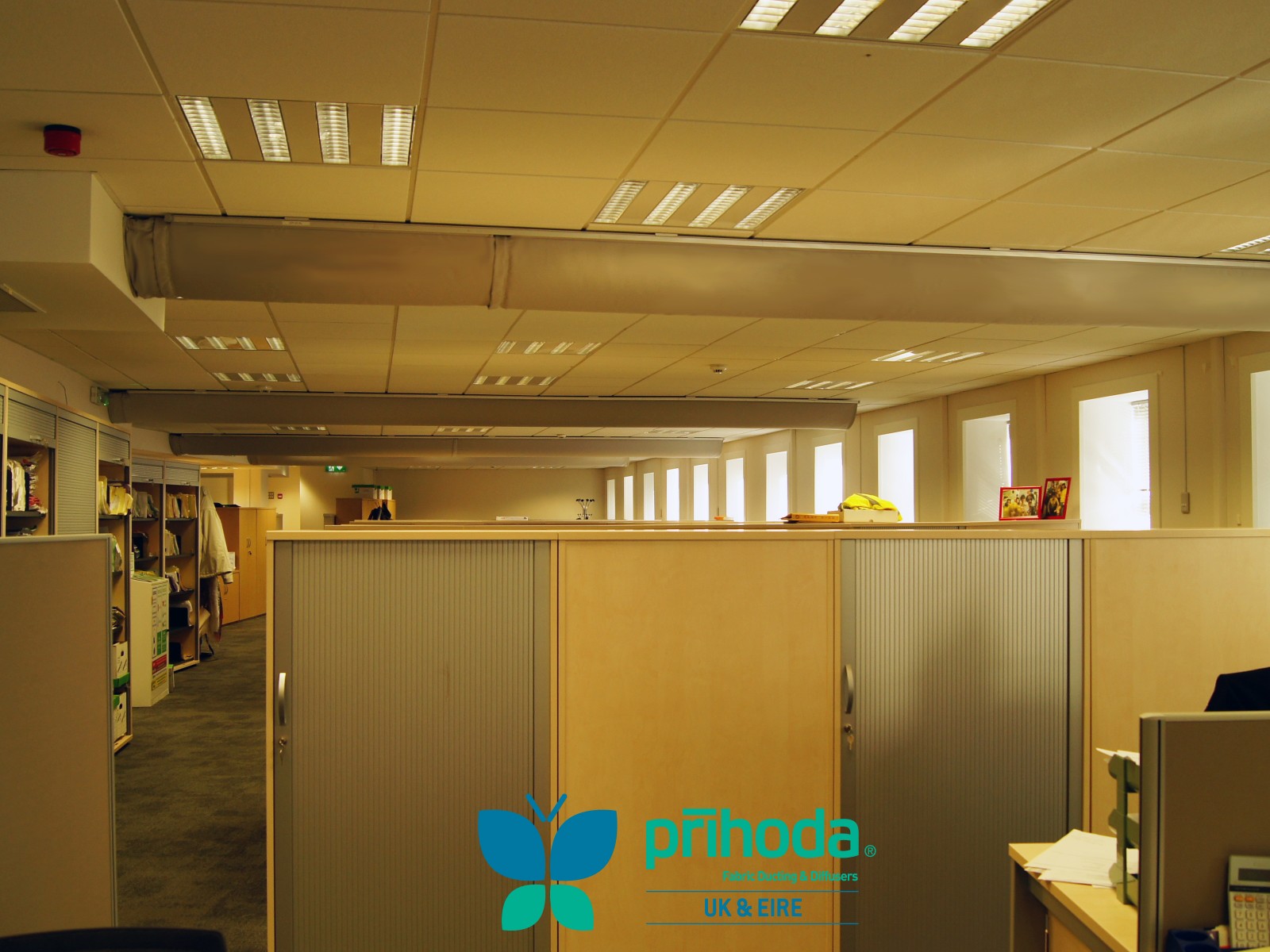
Problems With Air Ventilation in Offices
There are several problems with air movement and temperature that are usually identified with office building environmental air systems. Here we look at the 5 most common problems and why Prihoda Fabric Ducting is well placed to provide solutions to most problems.
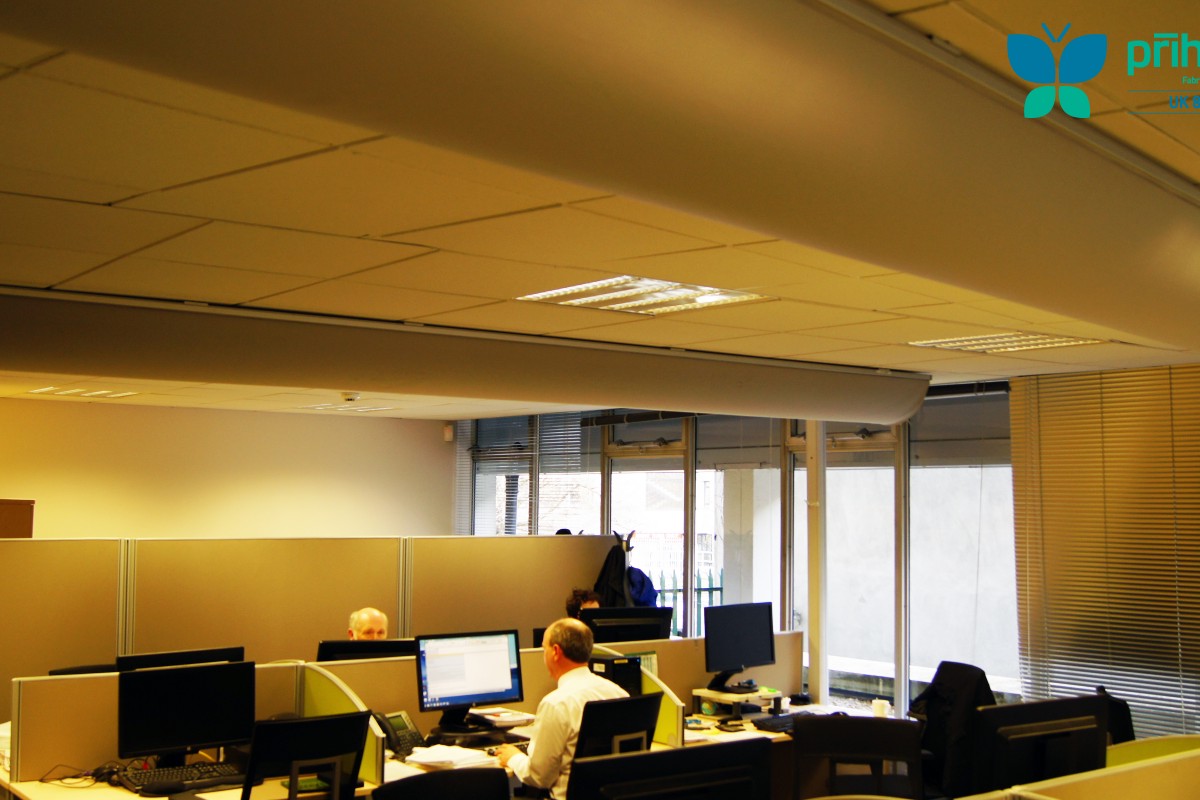
1. A Lack Of Air Movement.
Often caused by insufficient air volume or – more likely – poor distribution of air within the space, so that parts of the office building are getting no fresh air or recirculated air at all – this stale air leads to tiredness and illnesses – and can create the situation known as sick building syndrome.
Buildings with ducting above the ceiling have a few diffusers dotted around the room, and often fear of complaints from draughts leads to poor circulation. The Prihoda Fabric Duct is installed so that the entire surface of the duct is in the room; the entire surface is permeable and is always leaking air – across the whole surface area – all along the duct. We often also make this air ‘directional’ as it leaves the duct so that we know it’s heading towards areas with little or no circulation.
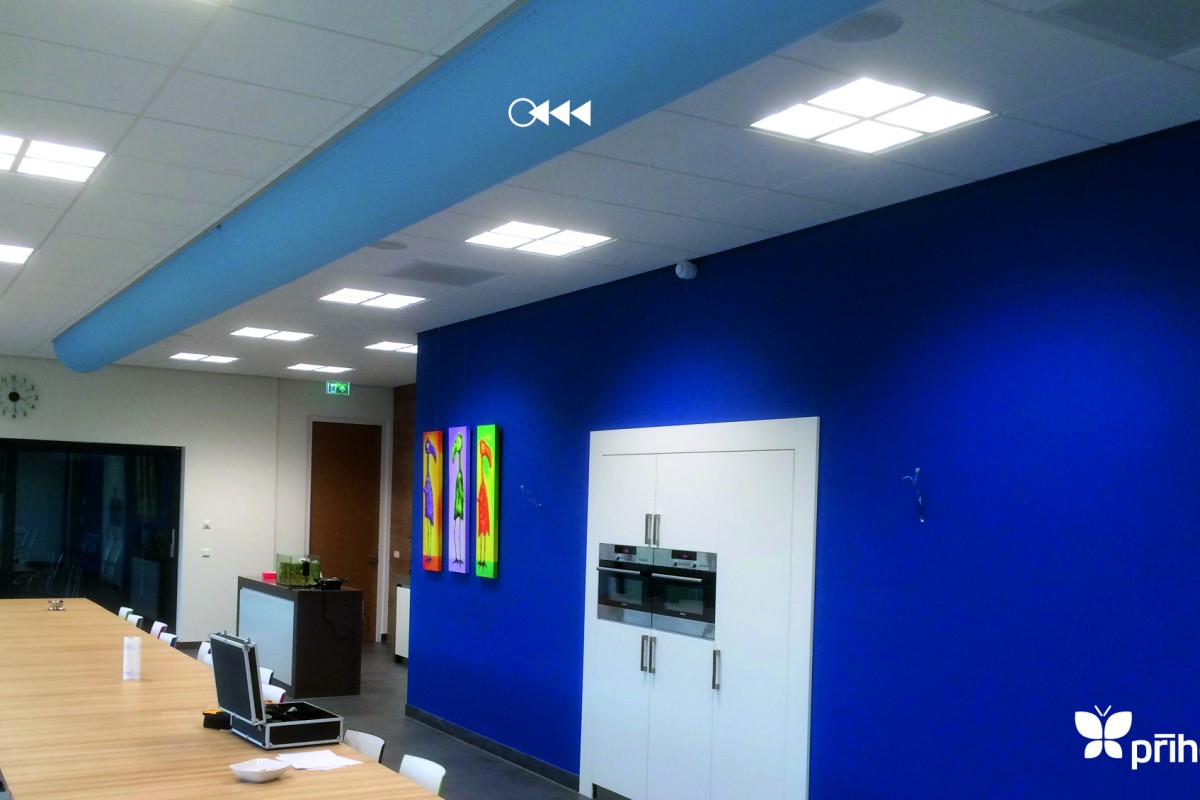
2. Velocity
One of the most common complaints in offices in Europe is that of velocity. Cold air is worse than warm air as it causes a stiff neck and can lead to time off work for some employees. The constant stream of air at a noticeable velocity (say more than 0.35- 0.50m/s) is stressful and creates situations where it can be hard to concentrate – in a very similar way to noise problems in an office.
Using the office we imagined in point one – we have lots of steel duct in the roof and only a few penetrations in the ceiling here and there for metal diffusers. These diffusers have to deliver a lot of air through a relatively small area and often in multiple directions. It’s common therefore that these create high velocity air patterns that affect people at their desks. Often desks are moveable or offices get refurbished but never these large expensive steel systems. Cassette air conditioners also create these issues and we have actually developed a line of products to help solve that specific problem. Cassettes deliver fast streams of cold air which due to their density travel a long distance, as cold air is denser than warm air.
Prihoda Fabric ducting is designed to deliver large volumes of cold air at low velocity into the occupied zone. Our micro-perforation technology – developed by and unique to us – encourages a lot of mixing and entrainment of surrounding room air, delivering the cool conditioned air where it’s needed and at a low velocity. We are the only fabric ducting manufacturer to produce air flow graphics specific to each individual project as standard. We have a large research and development facility and use Fluent Ansys software to predict the characteristics of each tiny laser cut perforation.
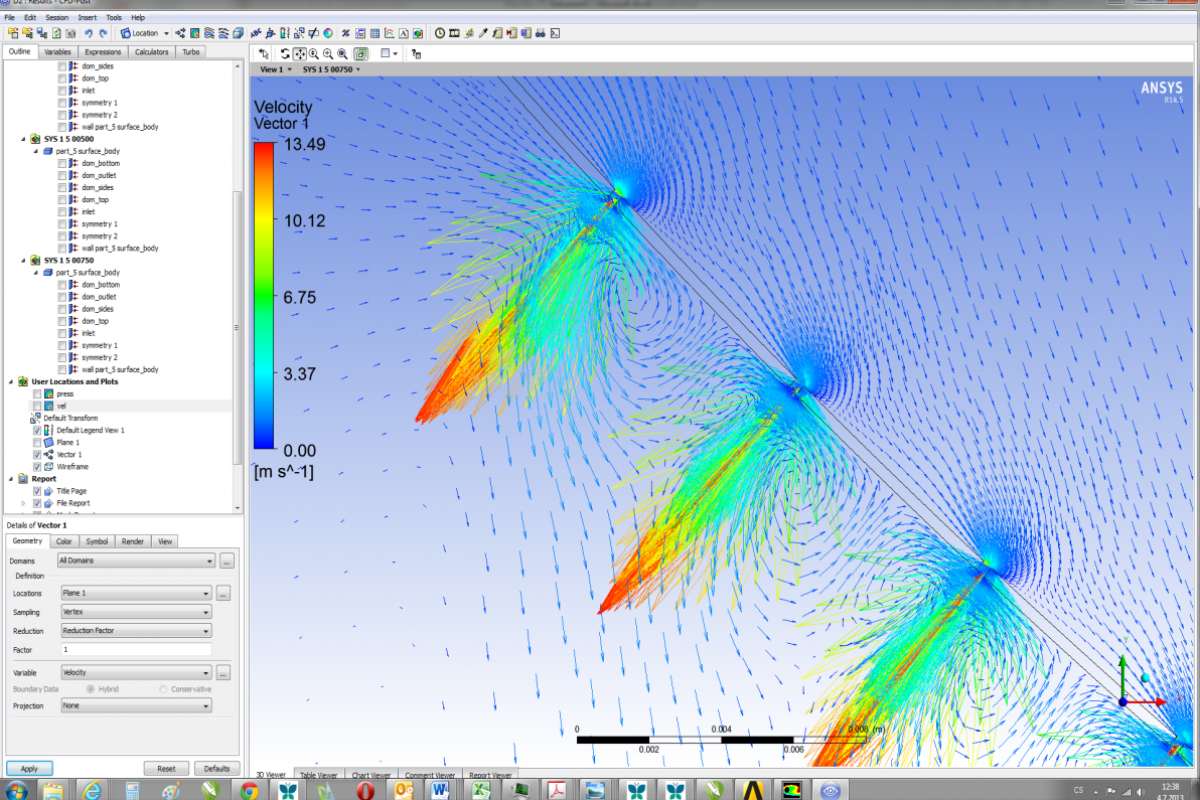
3. Noise
Large systems of rigid steel ducts pushing air through small rectangles of diffusers cause draughts as we’ve discussed but with velocity comes noise. Systems like these are made from rigid materials and can often reverberate and attenuate noise within the ducting of the system.
Prihoda Fabric Ducts are made from fabrics that are flexible as well as absorbing vibration and noise. We provide a noise calculation for each and every quotation we make. We design our systems around the specific applications and if we know we’re designing an office system we produce the quietest air delivery system possible, acceptable in labs, offices, libraries, theatres and importantly film and sound recording studios. Please note the slower the air velocity – the quieter the duct.
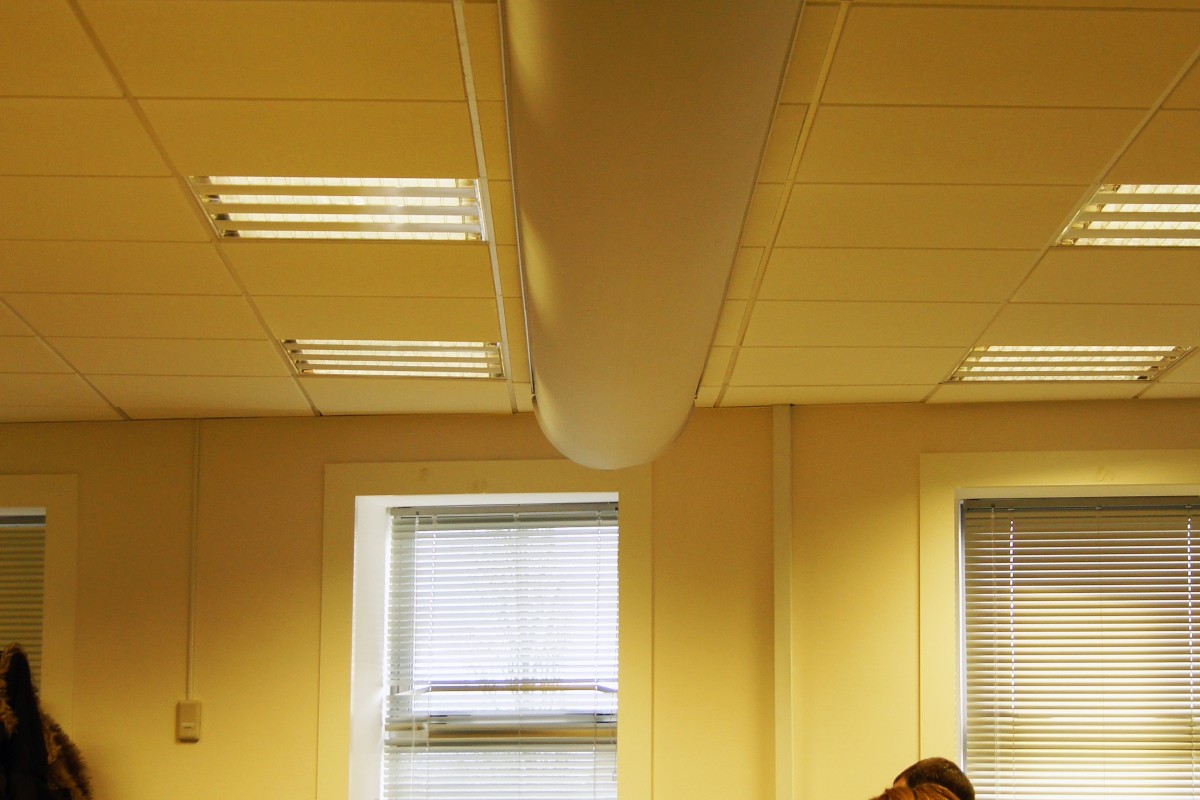
4. Cleaning
Traditional office systems are difficult and expensive to clean. Dust will eventually settle into any duct and all ducts should really be cleaned after a 5 year operational period – metal or fabric, purely from a hygiene perspective.
Fabric ducts simply slide out the rails and can be washed directly in a standard or industrial washing machine at 40oc. The ducts come in a range of 9 colours as standard (4 colours only for recycled material)

5. Sustainability
Perhaps one of the most important factors in today’s world is the question of sustainability. This can be summarised as follows…
- How much raw material did the product consume?
- How much energy did it take to make the product?
- How much energy did it take to ship it?
- How recyclable is the product once its useful life is finished?
Prihoda ‘repreve’ recycled fabric ducting is one of the most sustainable building products on the planet.
- The material is 100% recycled.
- The recycled material has come from USED plastic water bottles – 100%
- Not only then is material made from a recycled product but it’s a POST CONSUMER recycled product.
- Each square metre of material used saves 13 500mm bottles from land fill
- The manufacturing process uses
- 100% less raw material
- 66% Less energy consumption
- 50% less water consumption
- >40% reduction in Greenhouse Gasses
